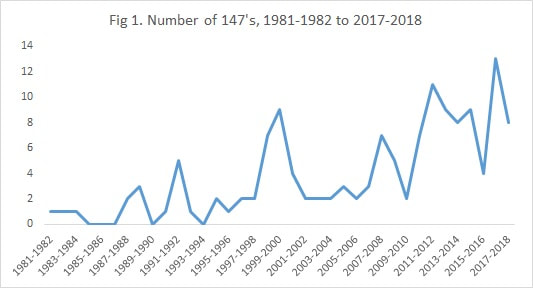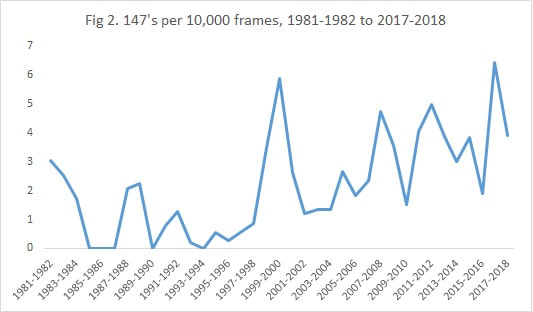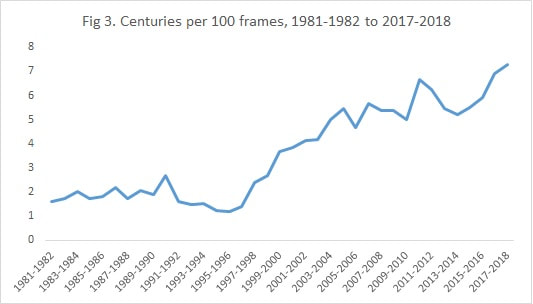Snooker is a sport which does not feature that heavily on our blog. Given that the most prestigious global snooker tournament, the World Snooker Championships, is starting this Saturday (21st April), it is a good opportunity to take a look at the game.
One interesting feature is that it is an example of a sport where there is a possibility of achieving a measure of perfection. What I refer to here is the 147 maximum break. This is when the player pots all of the balls on the table in the right order without missing a pot or making a foul shot. That is, 15 reds and 15 blacks (giving 120 points) and all of the remaining 6 colours (giving 27 points), consecutively.
It is perfection in the sense that it is the maximum number of points that a player can achieve in a break in one frame (although there is a caveat to this, if the opposition player makes a foul initially and you use one of the colours as a free ball before potting the remaining balls – but this happens on even rarer occasions). While it is only 36 pots in a row, those who know the game of snooker, appreciate that it represents the ultimate display of skill. Its possible equivalents include a 9 dart finish in darts, a sub 60 round in golf and a perfect 10 in gymnastics.
The first official maximum break in professional competition was made by Steve Davis in 1982. Since then a total of 138 maximum breaks have been achieved in professional competitions. Fig. 1 below present the number of 147’s achieved over time (on a per season basis – with thanks to cuetracker.net for the data). As can be seen there is a significant trend upwards in the data. Taking simple averages, from 1981-1982 to 2000-2001, 2.1 maximum breaks were recorded on average each season. Between 2001-2002 and 2017-2018, 5.7 maximum breaks were recorded on average each season.
So what explains this increase in perfection? The increase in the use of coaches, and in recent years the use of mind coaches, is undoubtedly an important factor. The expansion of the game, particularly into the Asian market, is also probably a factor in terms of increasing the degree of quality and competition. Technological improvements, such as the increased quality of the tables and cue tips would also have an effect but I suspect they play a more minor role in contrast to technological improvements in other sports.
Or maybe it’s simply down to increased levels of practice among pro-players. While it is very difficult to verify this, given the absence of data, snooker appears to me to be one of the games where practice plays a very significant role. Furthermore, in the debate between natural talent versus 10,000 hours of deliberate practice, I would suspect that snooker falls more in the latter category as a determinant to achieving success and/or perfection on a regular basis.
For those of you with a passing interest in the sport, Fig. 3 displays the number of centuries per 100 frames played, a more standard measure of talent and skill that is used in the game. Again, as you can see, the trend is upwards over time. In the seasons from 1981-1982 to 2000-2001, there were 2 centuries for every 100 frames, while in the seasons from 2001-2002 and 2017-2018, the rate increased to 5.5 centuries for every 100 frames.



 RSS Feed
RSS Feed